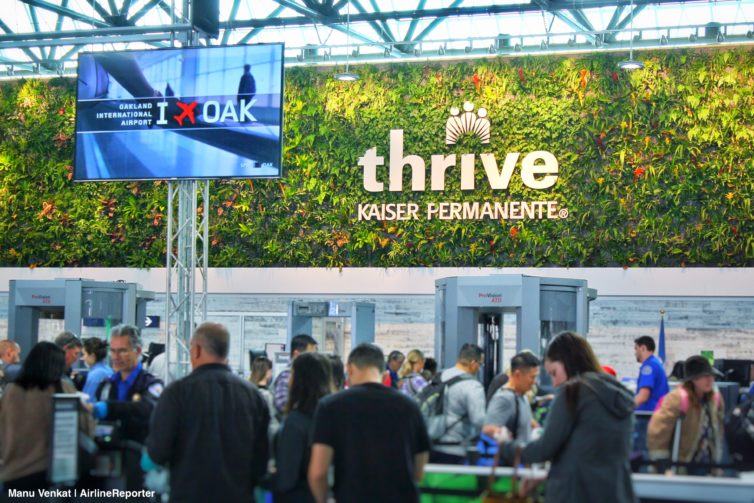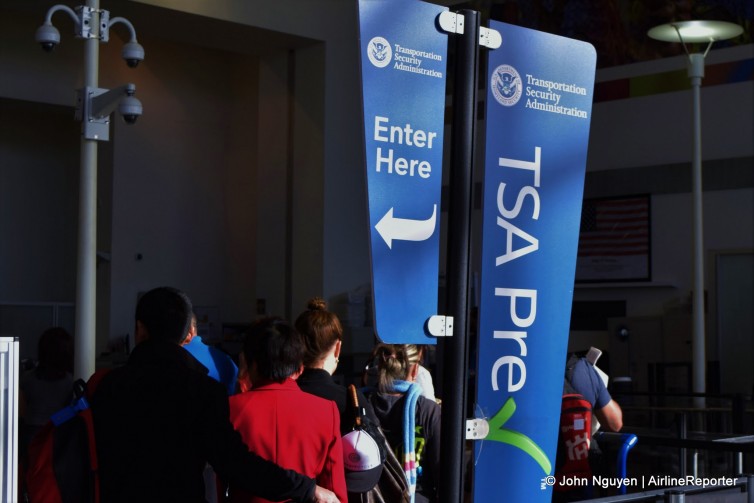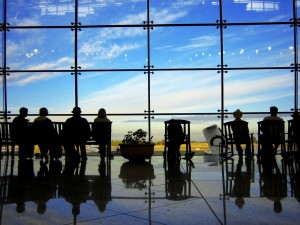
No matter how much you love flying, you’ve got to admit it can take a toll on your body and mind. Arriving at the airport late is stressful, TSA security checkpoints are hectic, and airplanes are dry. Air travel can bump your blood pressure up a few points and leave you feeling exhausted and dehydrated. And with chronic diseases like high blood pressure affecting tens of millions of Americans, those increased stress levels can definitely do some damage.
Oakland-based healthcare consortium Kaiser Permanente, which cares for millions of Americans, recently helped Oakland Airport redesign its Terminal 2 TSA security checkpoint to make it a more wellness-oriented space. With new H20-to-go machines, outdoorsy imagery, and even a massive living wall, we think they did a pretty solid job. Read on for more photo highlights!

The TSA PreCheck area at LAX Terminal 2
Let’s make one thing clear: TSA PreCheck is great. If you’ve flown anytime in the past few years, you’ve seen (or perhaps even been the beneficiaries of) the “PreCheck” lanes that some passengers use to zip past the general security lines, or even the premium lanes. Those who see others scoot all the way out of sight and/or get to keep their shoes on are envious; those who randomly received PreCheck access once are even more so.
For the low low price of $85, the Transportation Security Administration will grant a passenger the privilege of getting PreCheck most (not all) of the time. They’re in charge of keeping the flying public safe, and they’re not a for-profit institution, so we can trust them at their word, right?
NO! What they don’t tell you is that there are other ways to enroll in TSA’s PreCheck program without a) writing a check to TSA and b) paying less, or at least getting more out of what you pay.

Airports can be great places to hang out at after you get through security.
The last few years, the more I fly, the more I see body scanners. To date, even though many airports I travel to and from have body scanners, I have been able to avoid them — and pat-downs as well.
Don’t get me wrong. I am not about making a huge stand and doing whatever I can to avoid them. I just do what any normal passenger might try to avoid an additional delay at the airport.
Most of the time I fly out of Seattle-Tacoma International airport (SEA), where they have three main check points. At each check point there are multiple security lines and each line has access to a body scanner. Problem is, on many occasions there will be multiple lines open, but only one body scanner active.
A TSA agent will check my ID and boarding pass and then I have the ability to choose which security line I want. Of course, I choose a line that does not have a body scanner active and viola I have avoided the $150,000.00 high-tech scanner.
I have noticed at some airports there will be a second TSA employee telling you which line to go in, but often this person is missing or also easy to ignore if one wanted to. Could the TSA demand you go to line #1 with the body scanners and then escort you over? Sure, but that is a pretty embarrassing situation to put a person in, especially if it ends up being only people of a certain race.
This is not a big deal if someone who means airlines no harm can avoid the body scanners, but it would be just as easy for someone wanting to do harm. Take away all the privacy and health concerns; what is the point of spending all this money for the machines, training, and man-power to “keep us all safe,” if they can be consistently avoided? My father always told me, “if you are going to do something, do it right.” Sure, I didn’t always listen as a kid, but I think it is good advice for the TSA — I only hope they are listening.
How have your experiences with the body scanners gone? Have you noticed the same lack of consistency?


